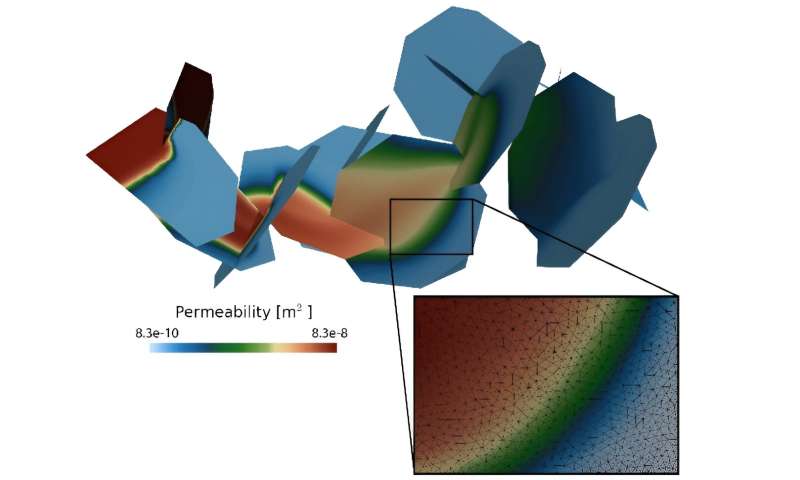Filling in the cracks: Scientists improve predictions for the dissolution of minerals in rock fractures

Fractures are the main way that water and other fluids move through rocks below the Earth's surface. As fluids move through these fractures, the fluids react with minerals in the rock and in the fractures. These chemical reactions change how fractures form and how permeable they are to fluids.
However, these processes are hard to predict. This is because the processes weather rocks much more slowly in the field than in laboratory tests. This study used simulations of how minerals dissolve in networks of fractures to discover a link between the structure of fractures in the rock and how that rock reacts with fluid moving through it.
This research resulted in a method that uses the geological attributes of subsurface rock to predict better how minerals will dissolve in fractures in the rock. This will help improve researchers' ability to predict how rock will act in a variety of applications. These include geothermal energy production, oil and gas extraction, underground construction, carbon dioxide storage, and radioactive waste disposal.
Field measurements of apparent geochemical weathering reaction rates in subsurface fractured porous media deviate from laboratory measurements by multiple orders of magnitude. Until now, scientists did not have a geologically based explanation for this discrepancy that can be used to predict reaction rates in field systems. Reactions can open and close fractures, altering heat extraction from geothermal reservoirs or allowing leakage from carbon sequestration reservoirs.
This study offers an explanation for why apparent dissolution rates in fractured media differ from laboratory measurements. The study used a series of high-fidelity reactive transport simulations of mineral dissolution within explicit 3D discrete fracture networks to link the geo-structural attributes with reactive transport observations.
The researchers anticipate that fracture simulations that capture the structure of the network combined with laboratory-measured dissolution rates will more accurately predict reactive transport in field-scale fracture networks.
The findings are published in the journal Geophysical Research Letters.
More information:
Jeffrey D. Hyman et al, A Geo‐Structurally Based Correction Factor for Apparent Dissolution Rates in Fractured Media, Geophysical Research Letters (2022). DOI: 10.1029/2022GL099513
Provided by US Department of Energy